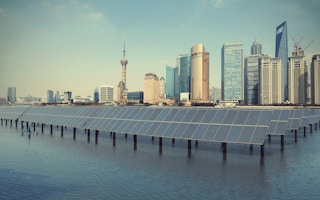BEIJING – Climate negotiators from around the world are headed for their annual pre-Christmas gathering, this year in Warsaw, with the goal of setting out concrete steps toward a binding global climate deal in 2015. As the Intergovernmental Panel on Climate Change highlights in its most recent report, money is the key to addressing global warming, which means that any strategy must account for trends in green investment.
To continue reading, subscribe to Eco‑Business.
There's something for everyone. We offer a range of subscription plans.
- Access our stories and receive our Insights Weekly newsletter with the free EB Member plan.
- Unlock unlimited access to our content and archive with EB Circle.
- Publish your content with EB Premium.
The most important of these trends is developing countries’ growing role in financing green investments. To be sure, developing countries would prefer that developed-country taxpayers foot the climate bill, given their countries’ disproportionate contributions to global warming. But, fairness aside, this is not going to happen, at least not on the scale required to prevent environmental disaster and protect vulnerable communities. Indeed, over the last few years, developed countries have increasingly sought to evade their climate obligations.
For their part, developed-country governments want private investors to fill the gap, arguing that scarce public funds could be used more effectively to leverage profit-seeking green finance. Of course, developed-country institutional investors do manage a lot of the world’s investable cash – almost $95 trillion in 2011, according to the OECD. And a growing number of investors care about climate change, with 26 per cent of asset managers (accounting for more than $12 trillion of assets under management) reporting that it factors into their investment decisions.
But investors are reluctant to finance long-term projects, let alone cover the incremental costs of green initiatives, which are projected to add at least another 14 per cent to a $100 trillion climate bill by 2030. Narrow investment criteria, intended to protect pensioners, are further limiting green investment, particularly in developing countries.
“
Last year, developing countries accounted for 48.8 per cent of global investment in wind, solar, biofuels, biomass and waste, geothermal, marine, and small hydropower – an increase of nearly 30 per cent since 2004. China is the dominant overall player, with $233 billion invested in renewable energy since 2004
Investors continue to be driven by short-term performance metrics. Given low carbon prices, the long-term consequences of emissions count for little, even among progressive asset managers. A recent report by the Carbon Tracker initiative and the Grantham Research Institute at the London School of Economics found that, in the last two years, the carbon intensities of companies traded on the main London and New York stock exchanges increased by seven per cent and 37 per cent, respectively.
But, while much of the world’s private capital is locked up in developed-country investments in carbon-intensive assets, developing-country investments in a low-carbon future are on the rise. Clean energy investment originating from non-OECD countries soared from $4.9 billion in 2004 to $72.6 billion last year, and has continued to rise throughout this year, according to a new report to be launched at the Warsaw meeting. (Since reaching a peak of $257 billion in 2011, such investment by developed countries has stalled.)
Last year, developing countries accounted for 48.8 per cent of global investment in wind, solar, biofuels, biomass and waste, geothermal, marine, and small hydropower – an increase of nearly 30 per cent since 2004. China is the dominant overall player, with $233 billion invested in renewable energy since 2004. The next five largest developing-country investors – Brazil, India, Thailand, South Africa, and Argentina – have invested a combined total of more than $100 billion over the same period.
Capital investment is not the only way that developing countries are financing the shift toward a less carbon-intensive future. Rising electricity and water tariffs, and changes in the allocation of growing tax revenues, reflect a broader approach to green financing. These ongoing expenditures – feed-in tariffs to support renewables, outlays for climate-resilient agriculture, and spending on low-carbon public transport – have not yet been included in total investment figures.
Green finance in the developing world is different from that offered by developed countries. For example, private investors based in developing countries often assess risk differently, having a more refined appreciation of political risks. And institutional investors are more interested in green investment that brings development co-benefits, such as job creation.
Furthermore, financial regulators in developing countries are more willing to help channel private finance toward green investment. Regulators in Nigeria and China, for example, have established green risk-assessment and reporting requirements. South Africa now allows pension funds to account for wider systemic risks and opportunities, as well as social and environmental factors, when establishing asset managers’ mandates. Bangladesh’s central bank has incorporated into its regulatory framework capital-steerage requirements that favor historically credit-starved rural enterprises.
Developing countries are probably already the main source of green finance worldwide – and their dominance will only increase. But policymakers have been largely oblivious to the shift – a failing that has undermined their ability to develop effective global solutions.
In order to make genuine progress in Warsaw, climate negotiators must account for the various ways in which developing countries are contributing to the transition toward a low-carbon future. And developed-country finance – still an important driver of the green transformation – should be used to support the developing countries that are leading the charge toward a cleaner, more sustainable future.
Simon Zadek, currently Visiting Scholar at Tsinghua School of Economics and Management, is Senior Fellow of the Global Green Growth Institute and the International Institute for Sustainable Development. This post originally appeared here.










